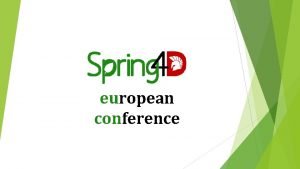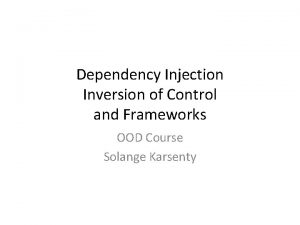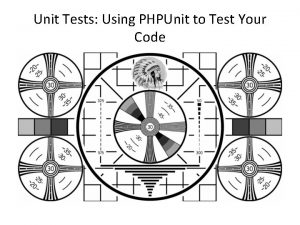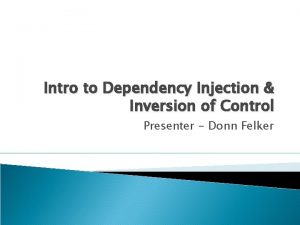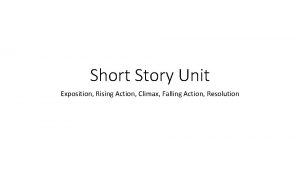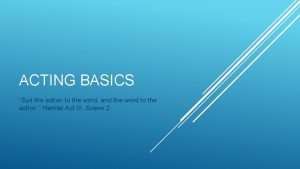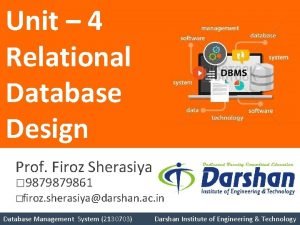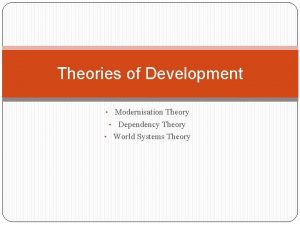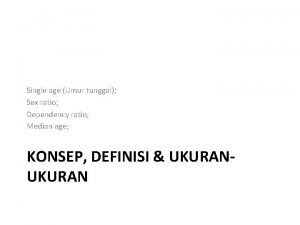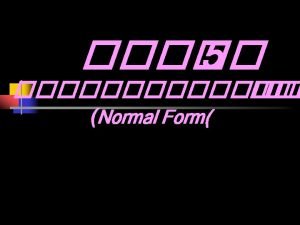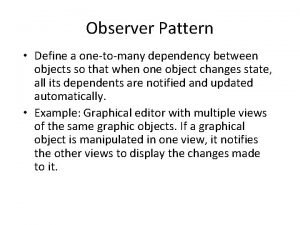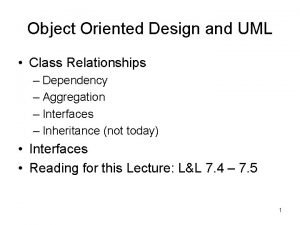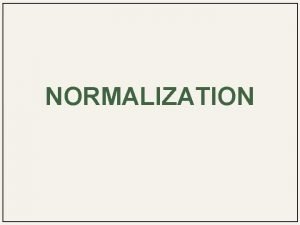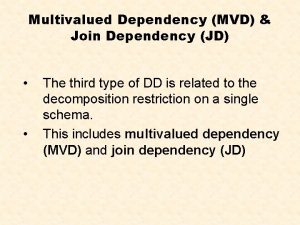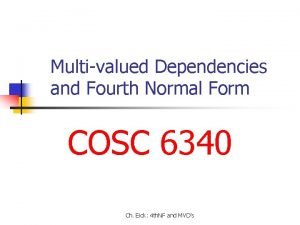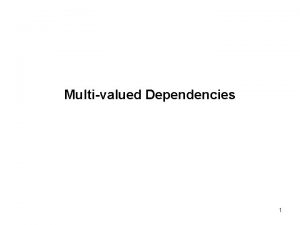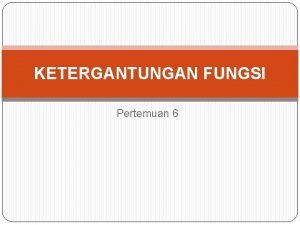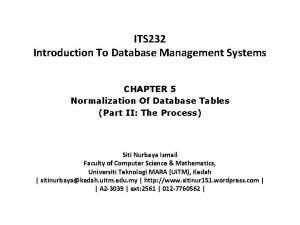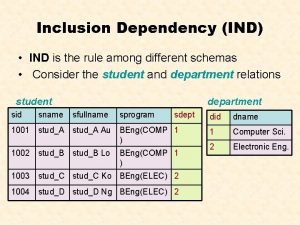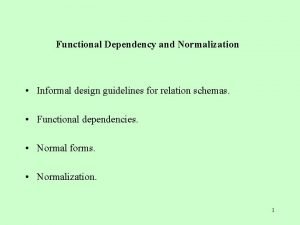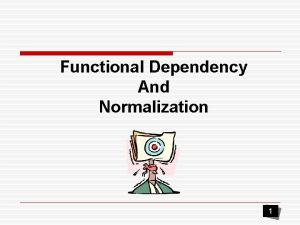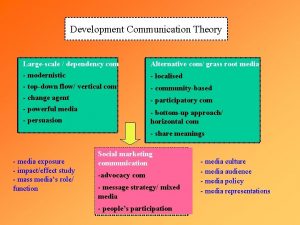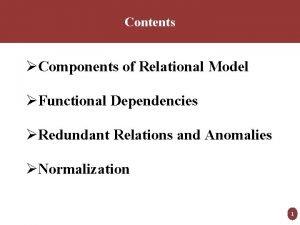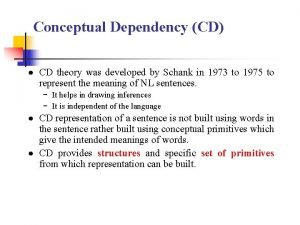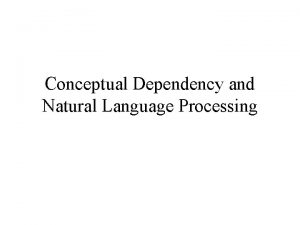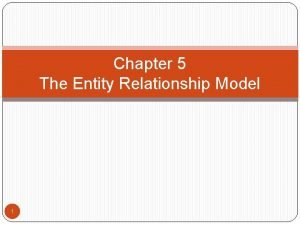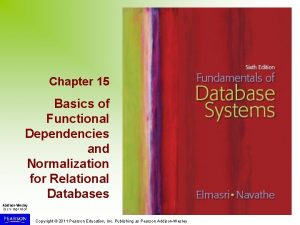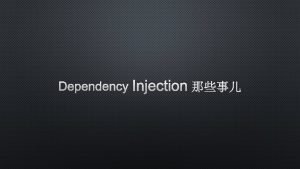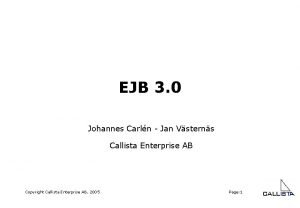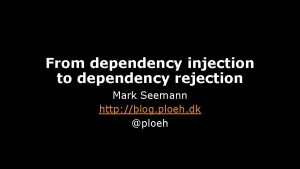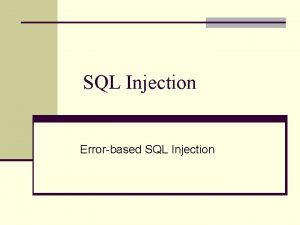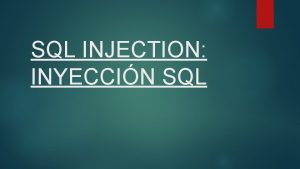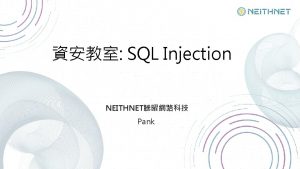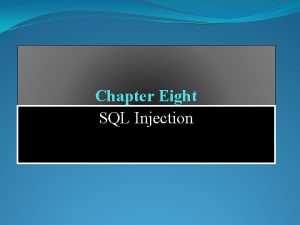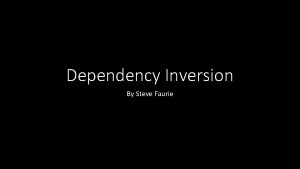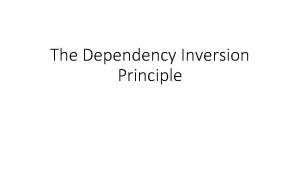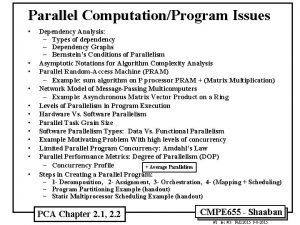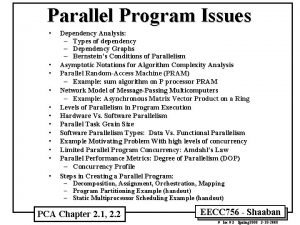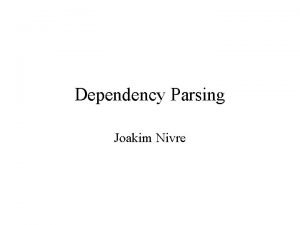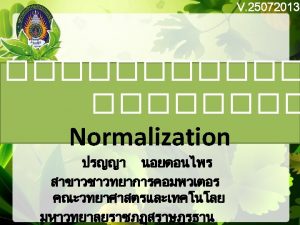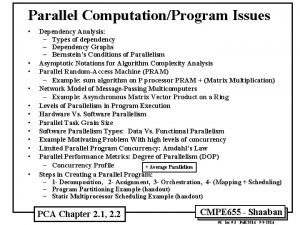Dependency Injection in Action Jan Vsterns Agenda DIDependency







































- Slides: 39

Dependency Injection in Action Jan Västernäs

Agenda (DI=Dependency Injection) • Background • What is DI ? • What is the DI value promise ? • Experiences – Using Spring DI container • Does DI live up to the promise ? • Future & Others CADEC 2006, DI, Slide 2 Copyright 2006, Callista Enterprise AB

Background • Using spring framework for one year • Limited by policy to some parts only • Large industrial project • My role : Application architect • Architecture & method team • Mix of very experienced developers and new-to-java developers CADEC 2006, DI, Slide 3 Copyright 2006, Callista Enterprise AB

Spring usage • Dependency Injection – 480 spring beans – 680 SQL statements as beans/properties • JDBC support – JDBC Template – Exception Hierarchy • JMS Support – JMS Template • Using ”factory beans” to intercept calls for – Out-of-container transaction/connection support – Declarative transaction demarcation • Test classes CADEC 2006, DI, Slide 4 Copyright 2006, Callista Enterprise AB

What is Dependency Injection ? • Dont call us - we’ll call you • Referenced object are declared • References are injected into an object – By calling setter method • Need some kind of runtime support ( DI container ) • Enables call interceptors to be used • Opposite of ”Dependency Lookup” CADEC 2006, DI, Slide 5 Copyright 2006, Callista Enterprise AB

Dependency Injection public void set. Dao(Customer. Dao dao) { this. dao = dao; } CADEC 2006, DI, Slide 6 Copyright 2006, Callista Enterprise AB

What is the DI value promise ? • No energy waisted nor code needed to find other objects – No JNDI, singletons, factories etc • Unit Test easier by mocking dependencies – May even make it possible without workarounds ! • Non-intrusive – In our project : Business code independant/unaware of technical infrastructure (including DI container). • ”Lighter” than EJB CADEC 2006, DI, Slide 7 Copyright 2006, Callista Enterprise AB

Experiences • Typical scenario • Setup • Configuration • Bootstrapping • Namespaces • Programming model • Integration • Test • Interceptors CADEC 2006, DI, Slide 8 Copyright 2006, Callista Enterprise AB

Typical scenario • Layered architecture • Thin clients – request/response • J 2 EE • Web-apps • EJB module only for Message. Driven EJB: s • JDBC - generated and handwritten CADEC 2006, DI, Slide 9 Copyright 2006, Callista Enterprise AB

CADEC 2006, DI, Slide 10 Copyright 2006, Callista Enterprise AB

Spring setup • 1 hour to get started with basic DI container functionality CADEC 2006, DI, Slide 11 Copyright 2006, Callista Enterprise AB

Spring DI Configuration • Overhead writing Xml config is acceptable – Use classnames as bean id and reference name – Copy-paste - nobrainer <bean id="order. Entry. Service" class="se. cadec. impl. Order. Entry. Service. Impl"> <property name="order. Entity" ref="order. Entity"/> </bean> <bean id="order. Entity" class="se. cadec. impl. Order. Entity. Impl"> <property name="order. Dao" ref="order. Dao"/> <property name="order. Validator" ref="order. Validator"/> </bean> private Order. Entity order. Entity; public void set. Order. Entity(Order. Entity order. Entity) this. order. Entity = order. Entity; CADEC 2006, DI, Slide 12 Copyright 2006, Callista Enterprise AB {

Spring DI Configuration • Debugging configuration errors is OK • Plugin helps org. springframework. beans. Not. Writable. Property. Exc eption: Invalid property 'dao' of bean class [se. cadec. impl. Order. Entity. Impl]: Bean property 'dao' is not writable or has an invalid setter method: Does the parameter type of the setter match the return type of the getter? CADEC 2006, DI, Slide 13 Copyright 2006, Callista Enterprise AB

Bootstrapping – modularization • Ear – Web module • Bootstrapping servlet • spring-config. xml – Xxx. jar • spring-config. xml – Yyy. jar • spring-config. xml – spring-config 1. xml – spring-config 2. xml – Zzz. jar • spring-config. xml CADEC 2006, DI, Slide 14 Copyright 2006, Callista Enterprise AB

Solution – Custom Bootstrapping • A help class that finds all spring configuration files on the classpath following a naming convention • The bootstrapping servlet calls this help class • Each file has references to the actual files used in that jar/war with the import function CADEC 2006, DI, Slide 15 Copyright 2006, Callista Enterprise AB

No namespace support • All configuration in one file – no problem • Each module has its own configuration file – may cause collisions • Solution – componentname: beanname <bean id=“ordercomponent: order. Entry. Service” CADEC 2006, DI, Slide 16 Copyright 2006, Callista Enterprise AB

Hive. Mind solution is better Unlike Spring, Hive. Mind has built-in namespace support, and fundamentally assumes that the graph of related services will be built from multiple locations (that is, each JAR on the classpath will be packaged with its own XML descriptor). Howard Lewis Ship, the creator of Hive. Mind and Tapestry explains why tapestry does not use Spring. CADEC 2006, DI, Slide 17 Copyright 2006, Callista Enterprise AB

Programming model • Which objects should be injected ? • What are the alternatives ? – new – static – Factory – JNDI • “Stateless Session” Bean obvious, Works very well with stateless singleton-style service-oriented beans. • Data Transfer Objects: s - never • In the middle – try to singletonize • One consistent way makes it easier CADEC 2006, DI, Slide 18 Copyright 2006, Callista Enterprise AB

Programming model 2 • Static methods – Can not be injected with bean – Can not be mocked • new – Can not be injected with beans – Can not be mocked CADEC 2006, DI, Slide 19 Copyright 2006, Callista Enterprise AB

Programming model 3 private void do. It() { My. Stateful. Object myobj = get. ANew. My. Stateful. Object(); } myobj. init(thisandthat, somethingelse); myobj. do. Something(); myobj. save. Result(); private My. Stateful. Object get. ANew. My. Stateful. Object() { return null; } CADEC 2006, DI, Slide 20 Copyright 2006, Callista Enterprise AB

Get new instance on each call • Method Injection (Lookup method). • Uses bytecode modification • We did not use this • Solution was to design service-style instead and use singleton beans • Non-singleton beans has been used rarely CADEC 2006, DI, Slide 21 Copyright 2006, Callista Enterprise AB

Integration • The DI container must create all beans • Other objects can not have injected references CADEC 2006, DI, Slide 22 Copyright 2006, Callista Enterprise AB

Struts Integration • Delegating. Tiles. Request. Processor • One tag in struts config • A spring configuration file listing all actions – Action-mapping to bean • Works well CADEC 2006, DI, Slide 23 Copyright 2006, Callista Enterprise AB

Message Driven Beans • EJB: s that is activated by incoming JMS messages • Generic MDB class that – Gets the bean id from JNDI – Gets the bean instance by calling the spring application. Context – Return to Dependency Lookup • MDB bean can be injected with references CADEC 2006, DI, Slide 24 Copyright 2006, Callista Enterprise AB

Succesfull usage • Action, service, entity, dao, helpers, utilities – Everything is injected • Properties like – SQL – Config parameters • • • Current time Map Inheritance JNDI to find datasource Reuse action class with parameters CADEC 2006, DI, Slide 25 Copyright 2006, Callista Enterprise AB

Testability – Unit test <<creates>> <<injects>> <<creates>> CADEC 2006, DI, Slide 26 Copyright 2006, Callista Enterprise AB

Unit Test • new to create implemention class • ”inject” mock objects for dependencies – By calling setters • Dont neew the full environment • Creating exceptional conditions easy • Unit Testing and mocking is not trivial – Which test to write ? – Create a lot of dto: s – Some classes are ”perfect” for testing – some not • DI makes it less painful CADEC 2006, DI, Slide 27 Copyright 2006, Callista Enterprise AB

Integration Test • Including – DI container – Config xml files – All dependencies as real classes – Database etc • Get Class to test from DI container – bean. Factory. get. Bean(”bean. Name”) – Introduces a binding to Spring – Return to Dependency Lookup CADEC 2006, DI, Slide 28 Copyright 2006, Callista Enterprise AB

Interceptor usage • DI enables interceptors out of the box – Requires own ”bean”-factory in non-DI setup • Typically NOT application development – More complex requirements – Insert a proxy betwen the calling and called object • Sample – Out-of-container transaction/connection support – Declarative transaction demarcation • Implemented by using spring Factory Bean concept & explicit proxy class definition CADEC 2006, DI, Slide 29 Copyright 2006, Callista Enterprise AB

What about the promises ? No energy waisted to find objects • xml format is simple Unit Test easier by mocking dependencies • YES ! Non-intrusive • DI invisible in beans • struts/junit etc integration not easy to replace ”Lighter” than EJB • Absolutely CADEC 2006, DI, Slide 30 Copyright 2006, Callista Enterprise AB

Future & Others

Spring vs EJB 3 • EJB 3 has dependency injection • EJB: s are POJOs • Non-EJB classes can NOT be injected – Except resurces and other JNDI items – Many of our beans must be made EJB: s • Injection into struts action classes ? • In our case – 250 local EJB: s • How does a appserver handle 250 EJB: s ? – Websphere ? JBoss/Geronimo/Glassfish etc ? – A appserver must be able to deliver services for an EJB, can it ever be as light-weight ? CADEC 2006, DI, Slide 32 Copyright 2006, Callista Enterprise AB

Migration between Spring – EJB 3 • Least common denominator – No annotations – Setter injection – Everything in xml – Production code platform independent CADEC 2006, DI, Slide 33 Copyright 2006, Callista Enterprise AB

EJB 2 -> Spring/EJB 3 CADEC 2006, DI, Slide 34 Copyright 2006, Callista Enterprise AB

Spring 2. 0 • Message-driven POJO: s • Enhanced xml configuration • AOP, Aspect. J integration • Others. . • Are we moving away from ”simple” ? ? CADEC 2006, DI, Slide 35 Copyright 2006, Callista Enterprise AB

DI future • Dependency Injection as a concept is here to stay • John Rodson “J 2 EE without DI” – A title we will probably not see • Why bother about simplicity ? We are all professionals right ? CADEC 2006, DI, Slide 36 Copyright 2006, Callista Enterprise AB

Is Java too complicated ? CADEC 2006, DI, Slide 37 Copyright 2006, Callista Enterprise AB

Ruby sample syntax # Check for pre-formatted string given check=Regexp. new('^'+Regexp. escape (format). gsub(/\#/, '. ')+'$') return string if string =~ check CADEC 2006, DI, Slide 38 Copyright 2006, Callista Enterprise AB

Time for Questions! CADEC 2006, DI, Slide 39 Copyright 2006, Callista Enterprise AB
 Types of injection
Types of injection Martin fowler inversion of control
Martin fowler inversion of control Phpunit stub static method
Phpunit stub static method Moq dependency injection
Moq dependency injection Dependency injection inversion of control
Dependency injection inversion of control Agenda sistemica y agenda institucional
Agenda sistemica y agenda institucional Exposition rising action climax falling action resolution
Exposition rising action climax falling action resolution The lion and the mouse plot diagram
The lion and the mouse plot diagram Stages of plot development
Stages of plot development Exposition in a rose for emily
Exposition in a rose for emily Suit the action to the word the word to the action meaning
Suit the action to the word the word to the action meaning Transitive dependency in dbms
Transitive dependency in dbms Dependency theory
Dependency theory Cherwell for dependency mapping
Cherwell for dependency mapping Dependency ratio rumus
Dependency ratio rumus Importance of dependency theory
Importance of dependency theory Structure dependency principle
Structure dependency principle Criticism of modernization theory
Criticism of modernization theory Trivial fd
Trivial fd Define one to many dependency between objects
Define one to many dependency between objects Class diagram dependency
Class diagram dependency Transitive dependency in dbms
Transitive dependency in dbms Join dependency
Join dependency Multi-valued dependency
Multi-valued dependency Multivalued dependency
Multivalued dependency Dependency ratio rumus
Dependency ratio rumus Jenis ketergantungan fungsi
Jenis ketergantungan fungsi Transitive dependency in dbms
Transitive dependency in dbms Inclusion dependency
Inclusion dependency Informal design guidelines for relation schema
Informal design guidelines for relation schema Functional dependency
Functional dependency Dependency theory in development communication
Dependency theory in development communication Transitive dependency
Transitive dependency Define script and conceptual dependency
Define script and conceptual dependency Conceptual dependency in ai
Conceptual dependency in ai Co dependency definition
Co dependency definition Weak entity example
Weak entity example Transitive dependency in dbms
Transitive dependency in dbms Dependency ratio ap human geography definition
Dependency ratio ap human geography definition North-south split ap human geography
North-south split ap human geography
